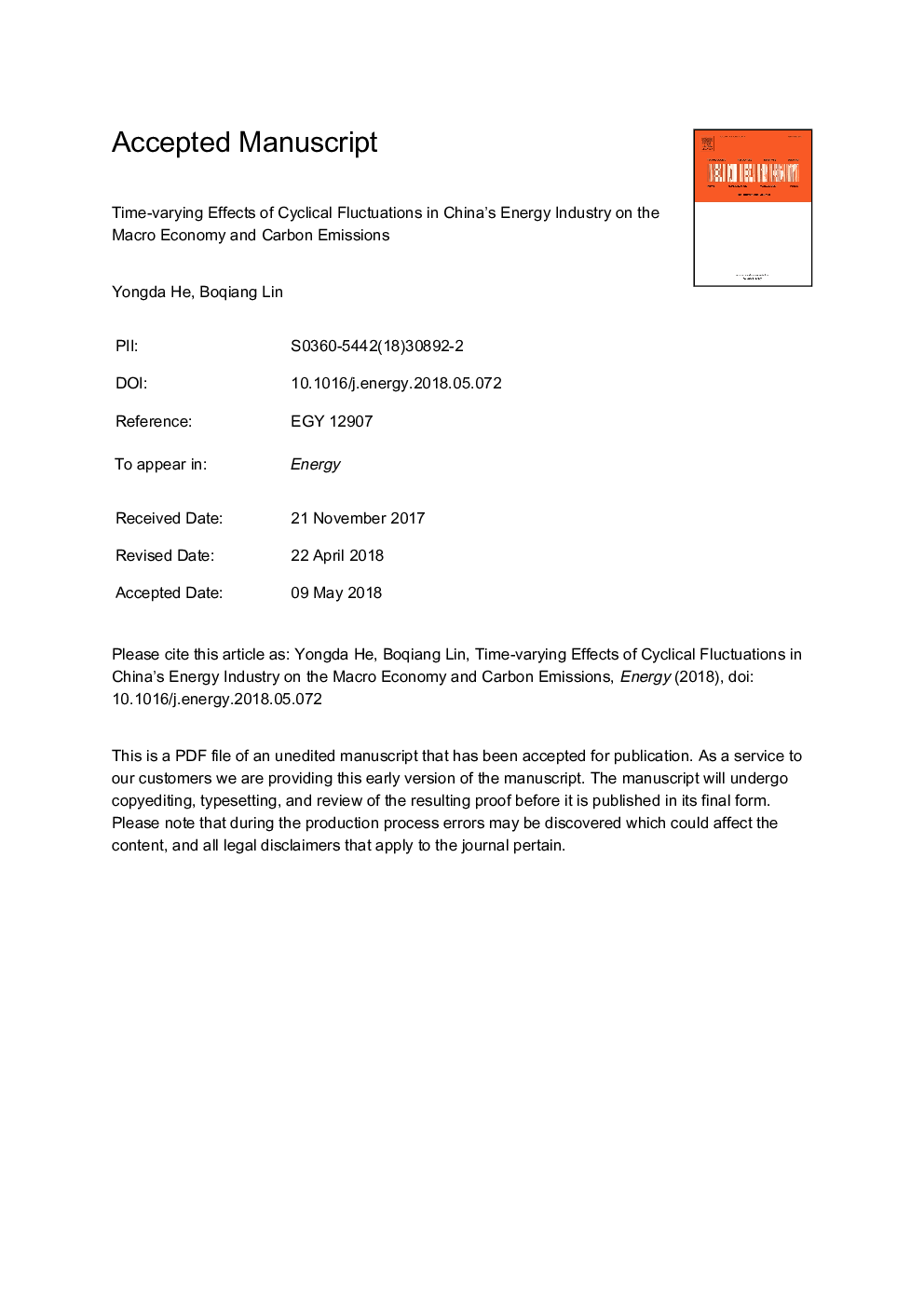| Article ID | Journal | Published Year | Pages | File Type |
|---|---|---|---|---|
| 8071528 | Energy | 2018 | 43 Pages |
Abstract
This study first used principal component analysis to calculate an operating index for China's energy industry and applied the index to investigate cyclical fluctuation trends. Subsequently, a time-varying parameter structural vector auto-regressive model was adopted to analyse the time-varying characteristics of the cyclical fluctuations in the macro economy and carbon emissions. The results showed that cyclical changes in the energy industry lagged fluctuations in the macroeconomic environment. The average length of the cycle was three years. Industrial shocks had a clear pro-cyclical impact on production levels and prices. During periods of prosperous growth, these positive shocks can sustain increased output and price levels. During recessionary periods, positive shocks have a short-term effect and are not favourable for output growth or price rebounds in the long run. The macroeconomic effect of cyclical fluctuations in the energy industry clearly has a stronger price effect than output effect and a greater impact on producer price inflation than consumer price inflation. In addition, the effect of energy shocks on carbon emissions has gradually weakened over time. We argue that promoting supply-side structural reform policies and eliminating excessive energy capacity within the industry while continuing to promote green energy strategies are key solutions to reversing supply-demand imbalances and downward price trends.
Related Topics
Physical Sciences and Engineering
Energy
Energy (General)
Authors
Yongda He, Boqiang Lin,
